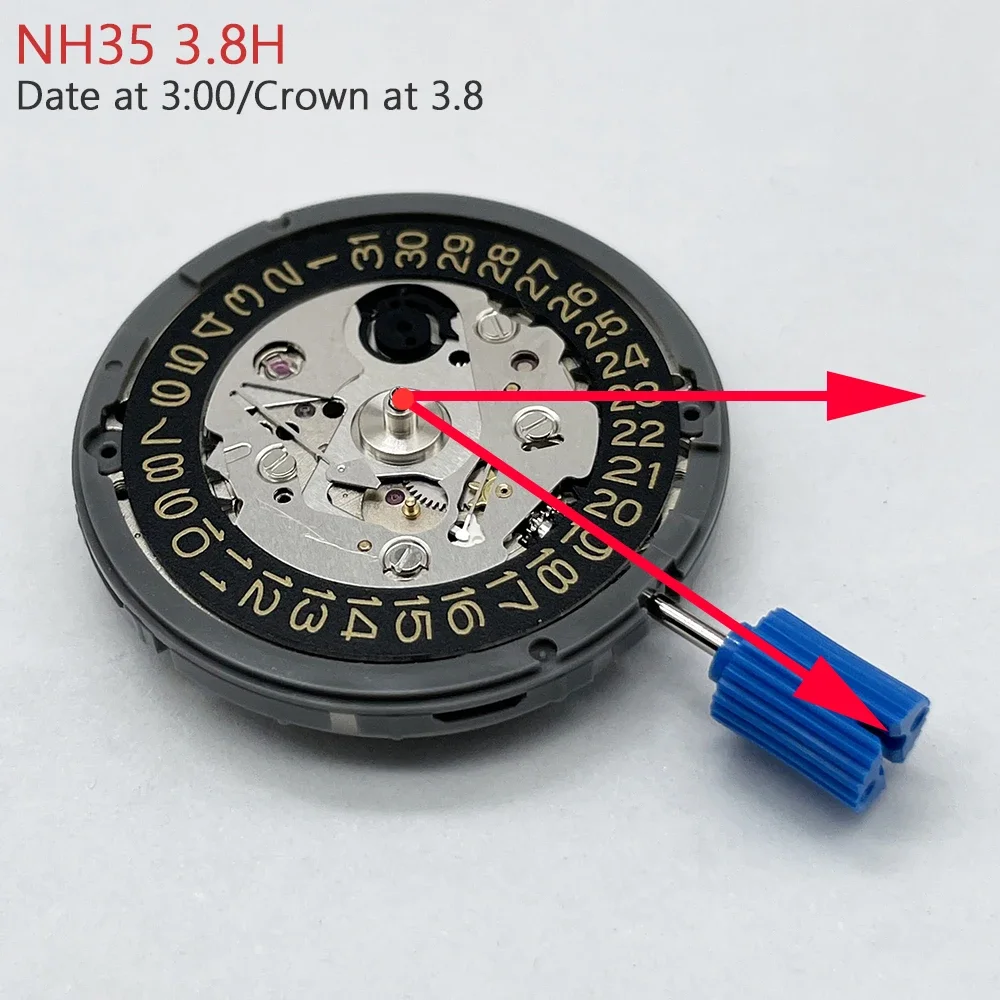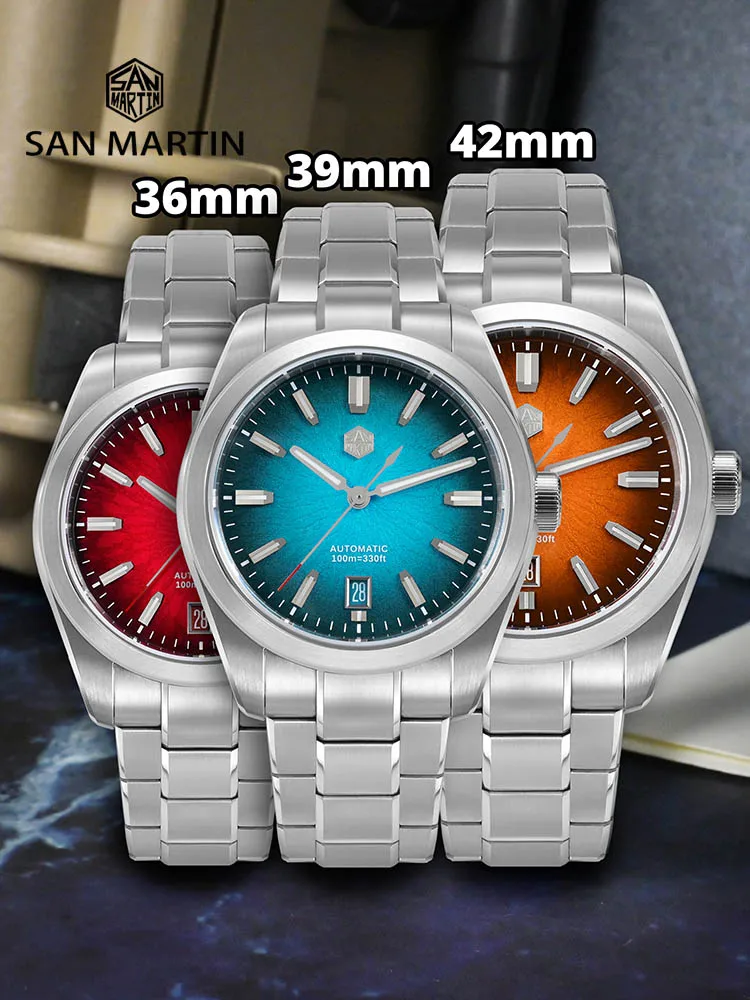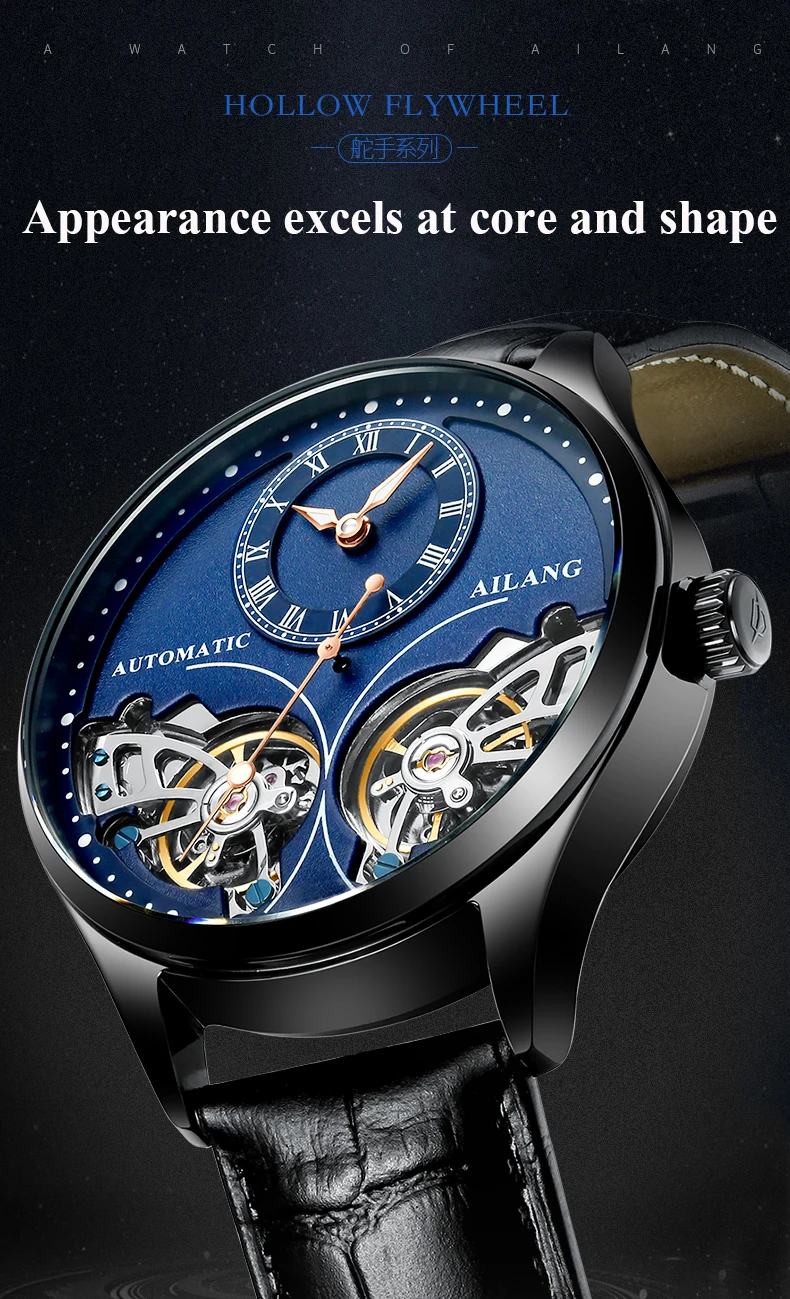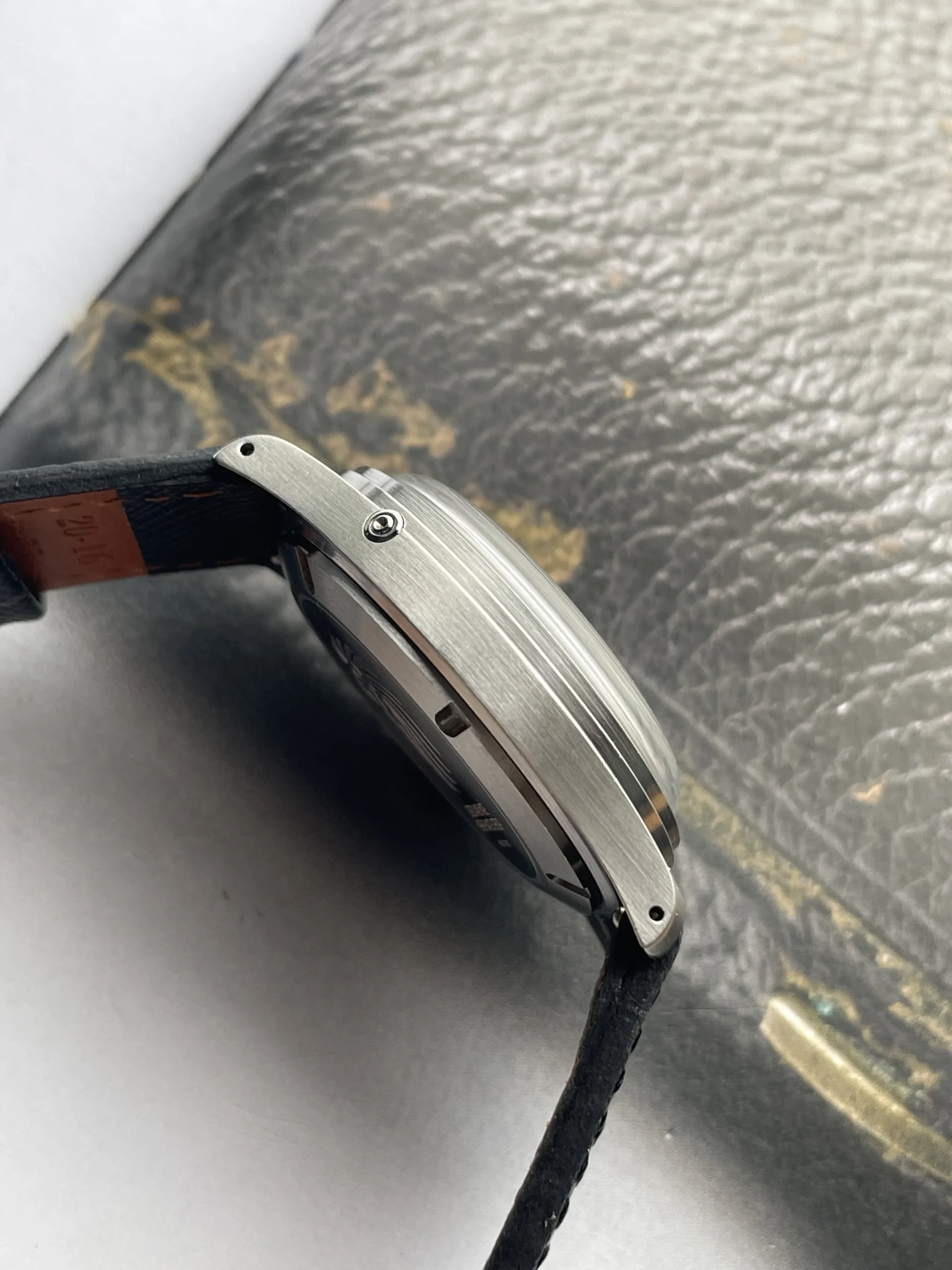Understanding the Moonphase Complication
A moonphase complication is one of horology’s most enchanting features—a small window on your watch dial that displays the current phase of the moon as it waxes and wanes through its cycle. This poetic function has been part of timekeeping for centuries, offering wearers a connection to one of nature’s most ancient rhythms.
Before modern technology, tracking lunar cycles held immense practical importance. Sailors relied on moon phases for tide predictions, farmers planned planting and harvesting according to lunar calendars, and many cultures based their festivals and ceremonies around the moon’s appearance. This rich heritage continues in modern watchmaking, where the moonphase remains a beloved complication.
However, a question arises when examining these mechanical marvels: how accurately do they represent the actual astronomical cycle? This question leads us to explore the fascinating tension between mechanical engineering and astronomical reality. The rich history of horological engineering reveals continuous efforts to close this gap between mechanical representation and astronomical truth.
For collectors interested in experiencing this celestial connection firsthand, moonphase automatic watches offer various interpretations of this classic complication, each with its own approach to the accuracy question.
The True Lunar Cycle: Astronomical Reality
To understand the accuracy challenge faced by watchmakers, we must first grasp the exact nature of the lunar cycle itself. The synodic lunar period—the time between one new moon and the next—is precisely 29.53059 days. This oddly specific number creates the fundamental challenge for mechanical representation.
This 29.53-day cycle determines what we observe from Earth as the moon orbits our planet, moving from new moon to full moon and back again. For a moonphase display to be perfectly accurate, it must somehow account for that precise decimal figure.
Further complicating matters, the actual lunar cycle isn’t completely consistent. The moon’s elliptical orbit means its distance from Earth varies (reaching its closest at perigee and farthest at apogee), slightly affecting the visual cycle we observe. These subtle variations create additional nuance that mechanical systems struggle to capture.
This astronomical reality serves as the benchmark against which all mechanical moonphase systems must be measured. The challenge lies in translating this decimal-based natural phenomenon into a gear-based mechanical system. For more details on this fascinating process, explore how moonphase watches track lunar cycles.
How Standard Mechanical Moonphases Work
The traditional mechanical moonphase uses an ingeniously simple system centered around a 59-tooth gear. This mechanism consists of a moon disc featuring two moon images positioned opposite each other. A small finger or lever advances this disc by one tooth each day, pushed by the watch’s date mechanism.
Since the gear has 59 teeth, and each complete rotation brings both moons into view, this creates a mechanical cycle of 29.5 days (59 teeth ÷ 2 moons = 29.5 days per lunar cycle). The system works like this:
- Each night at midnight, the date mechanism advances
- This movement pushes a lever that moves the moonphase gear one tooth forward
- The moon disc rotates slightly, showing the progressive phase
- After 29.5 days, the cycle repeats
This elegant solution has served watchmaking for generations, but it contains a mathematical compromise at its heart. By rounding the lunar cycle to 29.5 days instead of the actual 29.53059 days, a small but measurable inaccuracy is introduced.
The 59-tooth system represents just one approach within the broader universe of mechanical watch calendar complications, each facing similar challenges in translating astronomical cycles into mechanical movements.
Accuracy of Standard Moonphase Mechanisms
The discrepancy between the mechanical moonphase (29.5 days) and the true lunar cycle (29.53059 days) may seem minor, but it accumulates over time. The difference of 0.03059 days per cycle means that a standard moonphase will drift out of sync by approximately one full day every 2 years, 7 months, and 20 days (or about 31.7 months).
We can calculate this precisely:
– Error per cycle: 29.53059 – 29.5 = 0.03059 days
– Days until full day error: 1 ÷ 0.03059 = 32.69 lunar cycles
– Time span: 32.69 cycles × 29.53059 days = 965.65 days (about 31.7 months)
In practical terms, this means a watch set perfectly today would show the moon about one day off from reality after less than three years. For example, when the actual moon is full, a standard moonphase might show it as being just past full or approaching full, depending on the direction of drift.
For many watch enthusiasts, this level of accuracy is perfectly acceptable, requiring adjustment only every few years. Most owners simply reset their moonphase display during routine maintenance or when changing other calendar settings.
For those seeking greater precision in their timepieces, perpetual calendar automatic watches often incorporate more sophisticated moonphase mechanisms with improved accuracy.
High-Precision Moonphase Mechanisms
Beyond the standard 59-tooth system, watchmakers have developed significantly more accurate moonphase mechanisms for those who demand greater astronomical precision.
The most common high-precision approach uses a 135-tooth gear system. With this configuration, the moonphase display completes one full cycle every 135 ÷ 2 = 67.5 days, showing two complete lunar cycles in that period. This means each lunar cycle takes 67.5 ÷ 2 = 33.75 days, with the mechanism programmed to “skip” days to achieve a more accurate representation of the lunar cycle.
This sophisticated system reduces the error dramatically:
– Mechanical cycle: 29.5306 days (closely approximating the true 29.53059)
– Error per cycle: approximately 0.00001 days
– Days until full day error: about 100,000 days or 122 years
This 122-year accuracy represents a dramatic improvement over standard systems, meaning the watch would only need adjustment once per century rather than every three years.
These mechanisms typically include:
– More complex gear trains with additional wheels
– Higher tooth counts for greater precision
– Advanced linkages between the date and moonphase systems
– Finer engineering tolerances throughout
The evolution of precision mechanisms in watchmaking continues to push boundaries, with manufacturers finding increasingly creative ways to balance mechanical constraints with astronomical accuracy.
Ultra-Precise “Astronomical” Moonphases

At the pinnacle of moonphase engineering are the ultra-precise “astronomical” or “perpetual” moonphase mechanisms. These remarkable achievements in mechanical engineering achieve accuracy measured not in decades or centuries, but in millennia.
These exceptional systems typically employ gear trains with hundreds or even thousands of teeth, creating mathematical ratios that nearly perfectly mirror the lunar cycle. Some examples include:
- A 591-tooth system that deviates by only one day in 1,112 years
- Complex differential gear systems achieving one day of error in over 2,000 years
- Multi-layered mechanisms that account for both lunar phase and orbital position
These ultra-precise moonphases represent the absolute peak of mechanical ingenuity, often requiring extraordinary manufacturing precision to produce gears with hundreds of microscopic teeth all functioning perfectly within the confines of a wristwatch.
The mechanisms typically feature additional indicators beyond the basic moon display, such as moon age in days, lunar position in the zodiac, or even tide indicators. The varied approaches to moonphase displays in horology showcase this incredible diversity of solutions.
Comparison Chart: Moonphase Accuracy Levels
| Mechanism Type | Gear Configuration | Cycle Length | Error Rate | Adjustment Needed | Relative Complexity |
|---|---|---|---|---|---|
| Standard | 59-tooth | 29.5 days | 1 day every 2.7 years | Every 3 years | Low |
| High-Precision | 135-tooth | 29.5306 days | 1 day every 122 years | Once per century | Medium |
| Ultra-Precise | 591-tooth | 29.53058 days | 1 day every 1,112 years | Practically never | High |
| Astronomical | Complex differential | 29.53059 days | 1 day every 2,000+ years | Never in practical terms | Very High |
This comparison illustrates the trade-off between accuracy and complexity. While standard moonphases offer reasonable accuracy with simple, robust mechanisms, the pursuit of astronomical precision requires exponentially more complex engineering and manufacturing.
The Engineering Challenge: Mechanical Limitations
The fundamental challenge in creating accurate moonphase displays stems from trying to represent an irregular natural phenomenon (29.53059 days) using regular mechanical parts (gears with whole numbers of teeth). This is essentially a problem of approximating irrational numbers with rational ones.
Watchmakers face several key constraints:
– Physical space limitations within a watch case
– Manufacturing precision limits for extremely small gears
– Torque requirements to move increasingly complex systems
– Reliability considerations for everyday use
Historical solutions have progressed from simple approximations to increasingly sophisticated gear ratios that better approximate the lunar cycle. Early pocket watches used basic 59-tooth systems, while modern high-precision watches employ complex mathematical approaches to achieve better results.
This challenge mirrors many aspects of mechanical horology, where watchmakers continually push against physical constraints to achieve greater precision. Understanding these engineering trade-offs provides context for evaluating how long automatic watches last and appreciating the ingenuity behind their creation.
Setting and Maintaining Your Moonphase Watch
Properly setting and maintaining your moonphase watch ensures you’ll get the most from its astronomical display:
- First, determine the current moon phase using a reliable calendar, website, or app.
- Set your watch to midnight or the time specified in your owner’s manual for making adjustments.
- Use the moonphase corrector (usually a recessed pusher) to advance the display until it matches the current phase.
- Avoid adjusting the moonphase between approximately 9 PM and 3 AM when the mechanism is actively changing, as this could damage the gears.
- For standard moonphase mechanisms, plan to check and adjust the display every 2-3 years.
When setting your watch after it has been stopped, always set the moonphase first, followed by the date, then finally the time. This sequence ensures all calendar mechanisms are properly synchronized.
Remember that the visual display may not perfectly match what you see in the sky on any given night, as most moonphase displays show a stylized representation of the moon’s phase rather than its exact appearance.
The Aesthetic Value of Moonphase Complications
Classic Automatic Dress Watches, Day Date Automatic Watches, Perpetual Calendar Automatic Watches
Price range: $540.60 through $574.60 Select options This product has multiple variants. The options may be chosen on the product pageAutomatic Chronograph Watches, Chronograph Pilot Watches
Price range: $233.36 through $237.58 Select options This product has multiple variants. The options may be chosen on the product pageClassic Automatic Dress Watches, GMT Automatic Watches, GMT Pilot Watches
Price range: $1,240.86 through $1,463.33 Select options This product has multiple variants. The options may be chosen on the product pageAutomatic Chronograph Watches, Classic Style Dive Watches
$3,053.06 Select options This product has multiple variants. The options may be chosen on the product pageAutomatic Skeleton Watches, Open Heart Automatic Watches
$98.36 Select options This product has multiple variants. The options may be chosen on the product pageBronze Automatic Watches, Military Inspired Automatic Watches, Professional Spec Dive Watches
Price range: $1,442.21 through $1,442.82 Select options This product has multiple variants. The options may be chosen on the product page
Beyond their technical aspects, moonphase complications offer exceptional aesthetic value that transcends their functional purpose. The small lunar display provides watchmakers with a canvas for artistic expression unlike any other complication.
Many moonphases feature hand-painted or appliqued moons against stunning blue or black starry skies. Some use mother-of-pearl, goldstone, or aventurine glass to create cosmic backgrounds of remarkable beauty. The moon itself might be rendered in gold, silver, or even meteorite material for those seeking a genuine celestial connection.
This artistic dimension creates an emotional connection to timekeeping that purely functional complications rarely match. The moonphase serves as a constant reminder of our connection to natural rhythms and celestial movements, providing a moment of contemplation each time the wearer checks the time.
The range of automatic watches featuring moonphase complications demonstrates how this single feature can be interpreted in countless ways, from classically elegant to boldly contemporary.

Is Perfect Astronomical Accuracy Necessary?
When considering moonphase watches, a philosophical question arises: does perfect astronomical accuracy truly matter in a wristwatch?
For daily practical purposes, the standard moonphase accuracy is more than sufficient for most users. Even with its gradual drift, the display remains functionally correct for months at a time. Most owners don’t rely on their watch to plan astronomical observations or tide calculations where absolute precision would be critical.
When does higher accuracy become meaningful? For collectors and horological enthusiasts, the pursuit of greater precision represents appreciation for mechanical mastery rather than practical necessity. The value lies in knowing a watch contains exceptional engineering, even if that engineering solves a problem few actually face.
Many watch enthusiasts find themselves balancing several factors when evaluating a moonphase:
– The visual presentation and artistic execution
– The overall quality of the timepiece
– The heritage and reputation of its manufacturer
– The technical sophistication of the mechanism
For most collectors, a beautifully executed standard moonphase in a well-crafted watch often proves more satisfying than a more accurate moonphase in a less refined timepiece. The collection of unique automatic watches at Sharp Aspect demonstrates this balance between technical excellence and aesthetic appeal.
Choosing the Right Moonphase For Your Collection
When selecting a moonphase watch for your collection, consider these key factors:
First, determine how important astronomical accuracy is to your enjoyment. If you appreciate the poetry of the complication more than its precision, a standard moonphase in an otherwise exceptional watch may provide the most satisfaction. However, if you value horological innovation, seeking out watches with high-precision or perpetual moonphases might better suit your preferences.
Consider your budget realistically. Standard moonphases are widely available at various price points, while high-precision and astronomical moonphases typically appear only in more expensive timepieces due to their manufacturing complexity.
Evaluate the overall quality of the watch beyond just its moonphase function. A well-executed standard moonphase in a beautifully finished watch often offers more lasting pleasure than a higher-precision moonphase in a lesser-quality timepiece.
Finally, choose a design that resonates with you personally. Moonphase displays vary tremendously in their artistic execution—from classic golden moons against blue skies to contemporary minimalist interpretations. This aesthetic dimension often becomes the most significant factor in long-term enjoyment.

What Makes a Moonphase “Worth It” Despite Inaccuracy?
Despite their inherent inaccuracy compared to astronomical reality, mechanical moonphases continue to captivate watch enthusiasts. What makes them “worth it” goes beyond mere timekeeping:
- Mechanical poetry: The moonphase represents the romance of traditional watchmaking—capturing nature’s rhythm through purely mechanical means.
- Artistic expression: Few complications offer watchmakers such opportunity for visual creativity and craftsmanship.
- Historical connection: Wearing a moonphase connects you to centuries of horological tradition and human fascination with lunar cycles.
- Conversation piece: A beautifully executed moonphase inevitably draws attention and admiration, even from non-watch enthusiasts.
The value proposition extends beyond accuracy into the realm of emotional connection and appreciation of craft. Just as mechanical watches themselves continue to thrive despite quartz alternatives offering superior accuracy, the mechanical moonphase endures because it delivers something digital alternatives cannot—tangible, mechanical beauty.
The appeal of seeing the mechanical representation of cosmic cycles on your wrist, powered by nothing but springs and gears, creates a unique satisfaction that transcends practical considerations. This sentiment extends to many open heart automatic watches that similarly reveal the beauty of their mechanical hearts.
Frequently Asked Questions About Moonphase Accuracy
How often should I adjust my standard moonphase watch?
For typical 59-tooth mechanisms, plan to adjust your moonphase about once every 2.5 to 3 years to maintain reasonable accuracy.
Can I damage my watch by adjusting the moonphase?
Most modern moonphase watches have protected adjustment mechanisms, but you should avoid changing the moonphase when the date is changing (typically between 9 PM and 3 AM) to prevent gear damage.
Does temperature affect moonphase accuracy?
While extreme temperatures can affect a watch’s overall timekeeping, the moonphase mechanism itself is generally unaffected by temperature variations within normal wearing conditions.
Are digital moonphase displays more accurate?
Yes, digital or quartz moonphase watches can achieve perfect astronomical accuracy through programmed algorithms rather than mechanical approximations.
Can a standard moonphase display the correct phase during a blue moon?
Yes, a moonphase display shows the visual appearance of the moon regardless of whether it’s a blue moon (the second full moon in a calendar month), which is a naming convention rather than a different visual phase.
Does servicing a watch reset the moonphase accuracy?
A full service typically includes resetting and adjusting all complications, so your moonphase will be synchronized with the current lunar cycle after servicing.
The Future of Mechanical Moonphase Technology
While traditional moonphase mechanisms have remained largely unchanged for generations, modern watchmaking continues to innovate in this space. Contemporary approaches include:
New materials enabling finer gear teeth and smoother operation allow for more complex systems in smaller spaces. Advanced manufacturing techniques like LIGA and laser cutting permit the creation of gears with unprecedented precision, potentially improving accuracy without increasing complexity.
Some manufacturers are exploring hybrid systems that maintain the visual appeal of traditional displays while incorporating subtle electronic adjustments to maintain perfect synchronization with astronomical cycles.
3D moonphase displays that show not just the phase but the actual three-dimensional shape of the illuminated portion are beginning to appear in ultra-luxury timepieces, adding depth and realism to this classic complication.
These innovations honor the moonphase’s traditional role while addressing its historical limitations, ensuring this poetic complication continues to captivate watch enthusiasts well into the future.
The balance between honoring watchmaking tradition and embracing new technologies remains at the heart of the mechanical moonphase’s enduring appeal—a microcosm of the watchmaking art itself.







